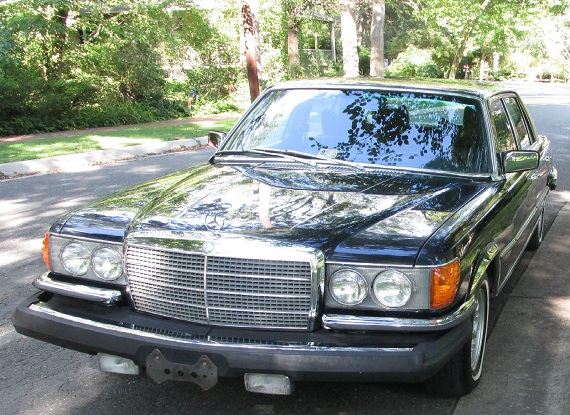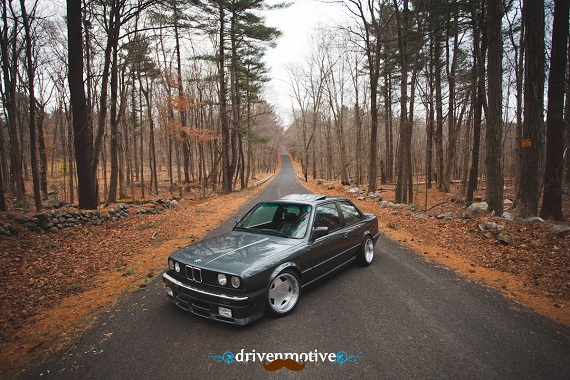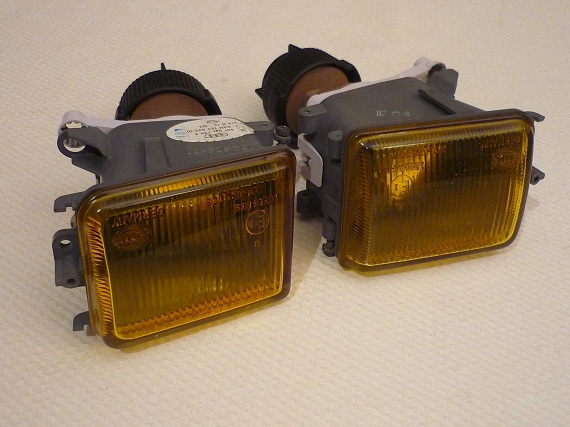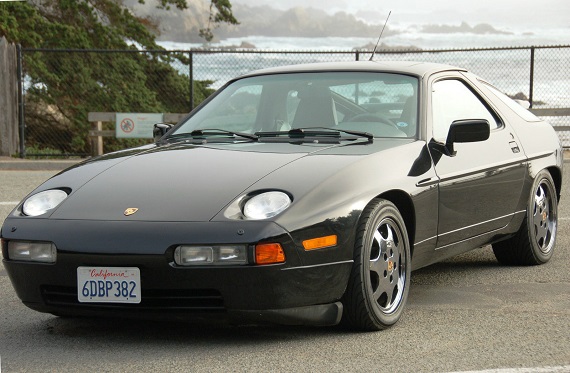It’s been a while since we saw Paul’s near perfect Silver Euro 450SEL 6.9 during V8 week last fall. These super-sedans established a trend Mercedes-Benz continues today; stuffing the largest V8 they can find into the largest sedan they can build. For many, it’s a winning combination – while the 6.9 was no slalom-assassin, there was simply nothing else that came close to this combination in the 1970s. Remember, this was the time period where the fastest Audi had around 113 horsepower in Europe. Then there was BMW, producing the 733 which made the Audi look downright slow but was still nearly 100hp shy of the Mercedes. But 1979 signaled the end of an era and the start of a new one, with two turbocharged sedans introduced signaling the future: Audi would release the 200 5T Turbo and BMW the 745i Turbo, and while both still couldn’t come close to the power output of the 6.9 they were much more efficient, modern motors. It wasn’t just the era of the giant motor that was on its way out, either, as the aging W116 was also on the verge of being retired in favor of the newer and more stylish W126 – a car that subsequently has become such a legend even in its own time. It’s easy therefore to discount the importance and significance of a car like the 6.9, but what it did was show us what would happen when engineers dared to let their hair down. Today there’s a lower mile example on Ebay:
Tag: V8
I’m not a conventional person by any stretch of the means. This is probably why I’m turned on whenever I see a large luxury sedan equipped with a manual gearbox. Like this BMW 730i for sale in Potsdam, Germany equipped with a 5-speed manual gearbox. This was the first year for the E38 7 series, and while we saw this engine and gearbox in the E34 530i, this 730i model was one that never made it here.
CLICK FOR DETAILS: 1995 BMW 730i on Mobile.de
Comments closedMotor swaps are always a lot of fun, especially when someone else has done the heavy lifting. In the case of the E30 platform, it seems there is no end to the different motors that get swapped in. We’ve seen S14 retrofits into 325s, plenty of S50, S52 and even a few S54s pop up. But let’s say you really like torque. And aluminum. What’s an E30 enthusiast to do? Well, of course you could swap a M60 4.0 V8 out of the E34 540i into a 325es. In its original form, the 325es was a bit of a slowpoke good handler looking for more power. The E34 540i was a great motor toting around a fair amount of weight. Couple the two together, and Viola! You make the folks at the local tire depot quite happy. Take a look at this tuned 325:
CLICK FOR DETAILS: 1986 BMW 325es on eBay
2 CommentsJust bought a V8 quattro from our V8 quattro roundup the other day? Good choice! Need something to set it apart? How about some OEM Hella yellow foglights:
CLICK FOR DETAILS: 1989-1994 Audi V8 Quattro foglights on eBay
Comments closedIt’s sometimes interesting to consider what might have been. Had the 928 superseded the 911 as Porsche’s flagship model, then would we still consider the marque the way in which we do today? Perhaps the 911 would have become an even more hardcore machine primarily restricted to variants such as the GT2 and GT3 while the 928 became an exquisitely refined GT in a vein similar to an Aston Martin. Might Porsche have become a niche vehicle like the Aston as well? Who knows? What we do know is that production of the 928 spanned nearly 20 years and encompassed parts of three decades. Furthermore, remarkably, it remained reasonably similar throughout the model’s life, especially in its appearance. It is a testament to the original design that so few refinements were even necessary and the 928 still looks good today! The car featured here is a fairly low mileage 1991 Porsche 928 S4 located in California. The 928 S4 was produced from 1987-1991 and featured a 5.0 liter V8 delivering 316 hp to the rear wheels. For the final two years of its production the S4 was only offered with a 4-speed automatic as the 928 GT essentially became the sport version of the 928 and replaced the manual version of the S4.




